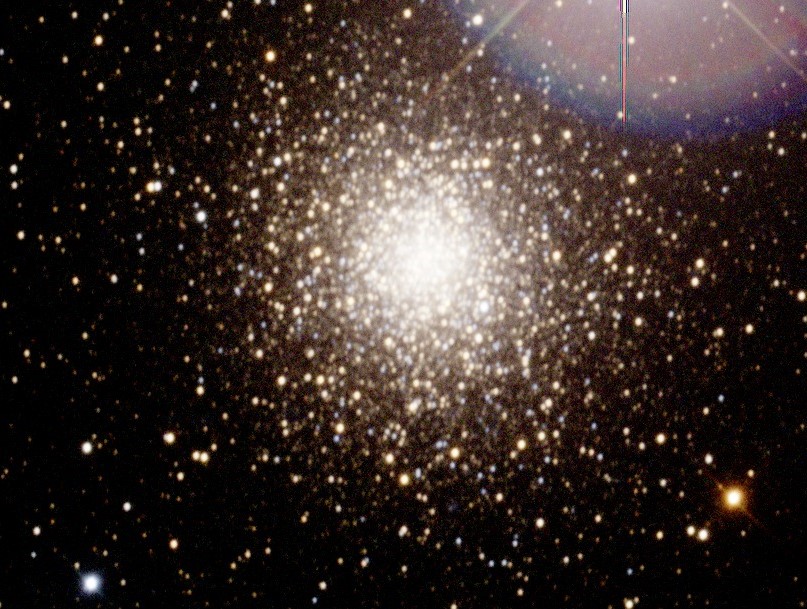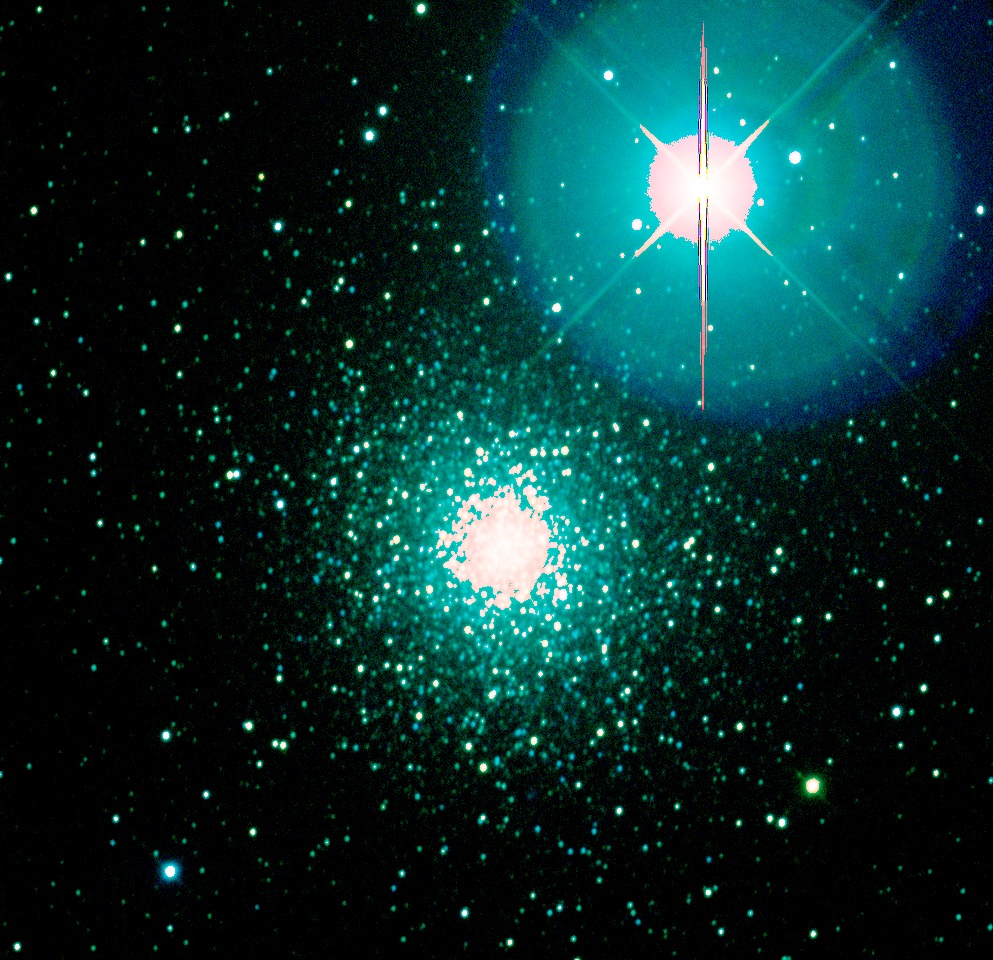The NGC 5286 is a 12.54-billion-year-old star discovered by Scottish astronomer James Dunlop in 1826 in Australia, the Centaurus constellation is home to the 7.6 magnitude cluster. It is located 51 degrees below the celestial equator and 13 hours to the right of the celestial longitude which technically aligns with the 0-degree longitude on earth. The use of certain grammar may already be appalling but be rest assured this blog elaborates on the wonder and beauty of the NGC 5286 cluster and not imaginary lines.
The relationships and characteristics between physical properties of the cluster were gotten and analyzed using telescopes for direct observation and Skynet software to extract data from images taken. 15 images of the cluster were taken, 5 of with a blue filter(B filter), green filter(V filter) and red filter(R filter). However, only 5 of those images were employed for the extraction of data, the 5 images used are referred to master calibrated images, calibration of images applies a pixel-to-real distance factor which allows said images to be used for collection telemetric data. The images using the PROMPT 5 telescope (Panchromatic Robotic Optical Monitoring and Polarimetry Telescopes) at the Cerro-Tololo Inter-American Observatory, Chile. Images taken using the B filter were taken with an exposure time of 73.17 seconds, while the V and R filter had exposure time of 36.59 seconds. The images go through a series of processes before the final image displayed below is achieved; the images were calibrated, stacked, aligned, colored, deblended and de-reddened to reach this final product(image on right side in figure 1).
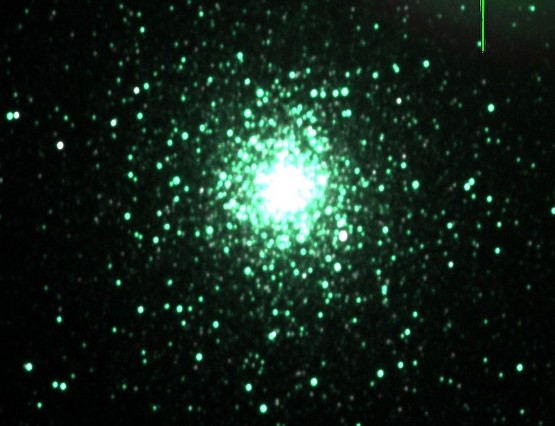 Figure 1: Images of NGC 5286 (Reddened image to right and de-reddened image to the left).
Figure 1: Images of NGC 5286 (Reddened image to right and de-reddened image to the left).
Figure 1: Images of NGC 5286 (Reddened image to right and de-reddened image to the left).
Several facts about this cluster were found and/or confirmed, including the fact that this cluster is older than our solar system. Isochrone models are curves on the Hertzsprung-Russell diagram that represent a population of stars, in this case, the population of stars in the NGC 5286 cluster. Two isochrone models were made, one included data from GAIA (Global Astrometric Interferometer for Astrophysics) pictured left and one included data from the images I used. The data I used to make my isochrone model was gotten through batch photometering the stacked and aligned images, this essentially extracted data about all stars imaged.
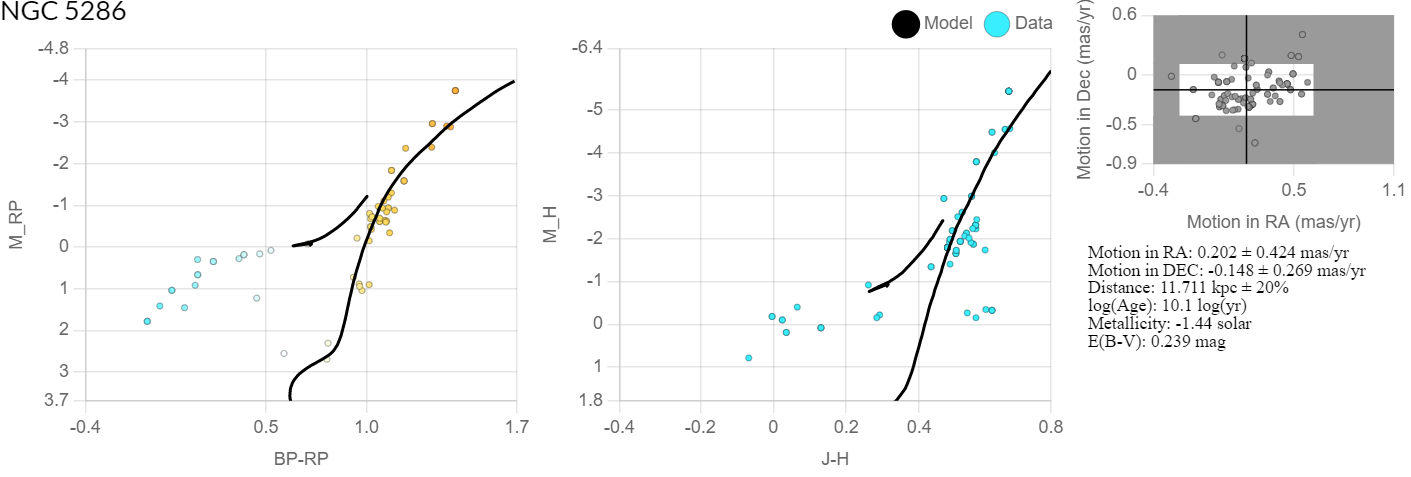 |
Figure 2: Isochrone models for NGC 5286
The telemetric analysis also found that the cluster is 16.09kpc ± 20% from earth, and has an age of 9.98billion years, a metallicity of -1.73 solar and a magnitude of 0.21 mags. The Isochrone model I made is relatively a better fit, the change in distance data depopulated the stars analyzed and there are way less stars in the GAIA Isochrone model.
NGC 5286, the 55th oldest star in the milky way, is 236 lightyears away from M Centauri (a binary system) which is so bright that we can see it with the naked eye from earth. The hidden treasure in the image of the cluster is M Centauri, not hidden actually, it was cropped out; the image below shows NGC 5286 and a “bleeding” M Centauri (bleeding in astronomy refers to when pixels in an image fill up and overflow into a neighboring pixel, this occurs when images of very luminous objects like M Centauri are taken).
Figure 3: Image of NGC5286 and M Centauri.
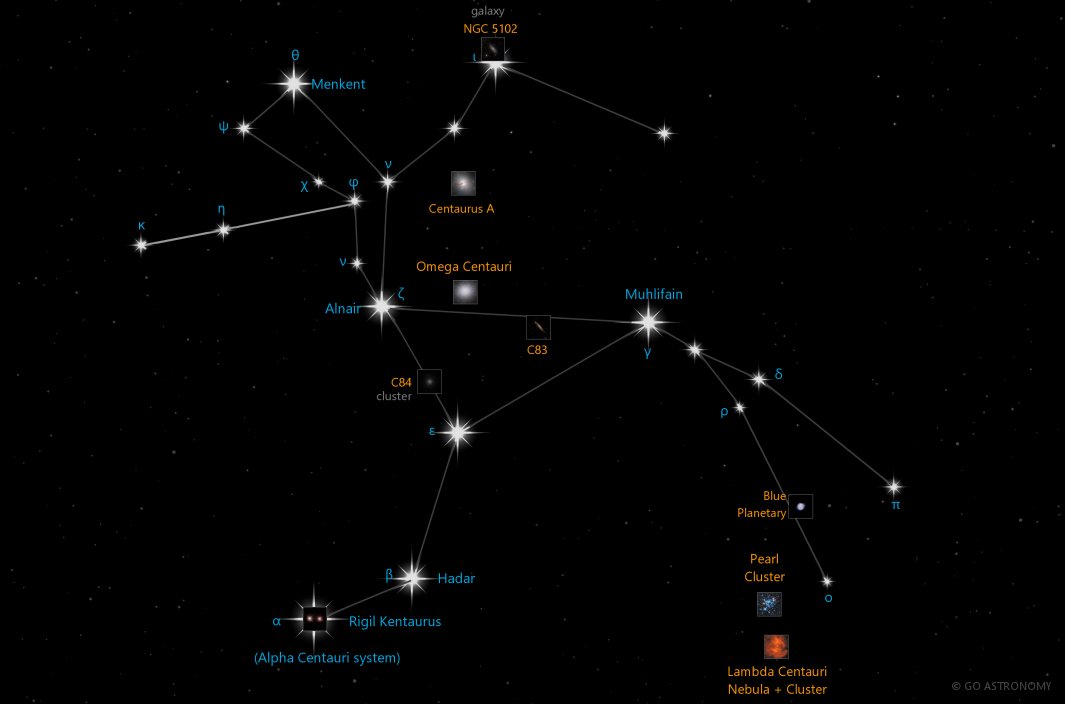 |
Figure 3: NGC 5286 and M Centauri finder chart.
The advent of technology has made it possible to study such massive objects to a high detail as presented above; learning this in a practical manner as such gives one an enduring memory and understanding of subject matter. The study of cool clusters very far away from us like NGC 5286 is one of the reasons why astronomy is the coolest science, Dr Daryl once said, “Science is super cool, and astronomy in particular is the coolest”.
References:
